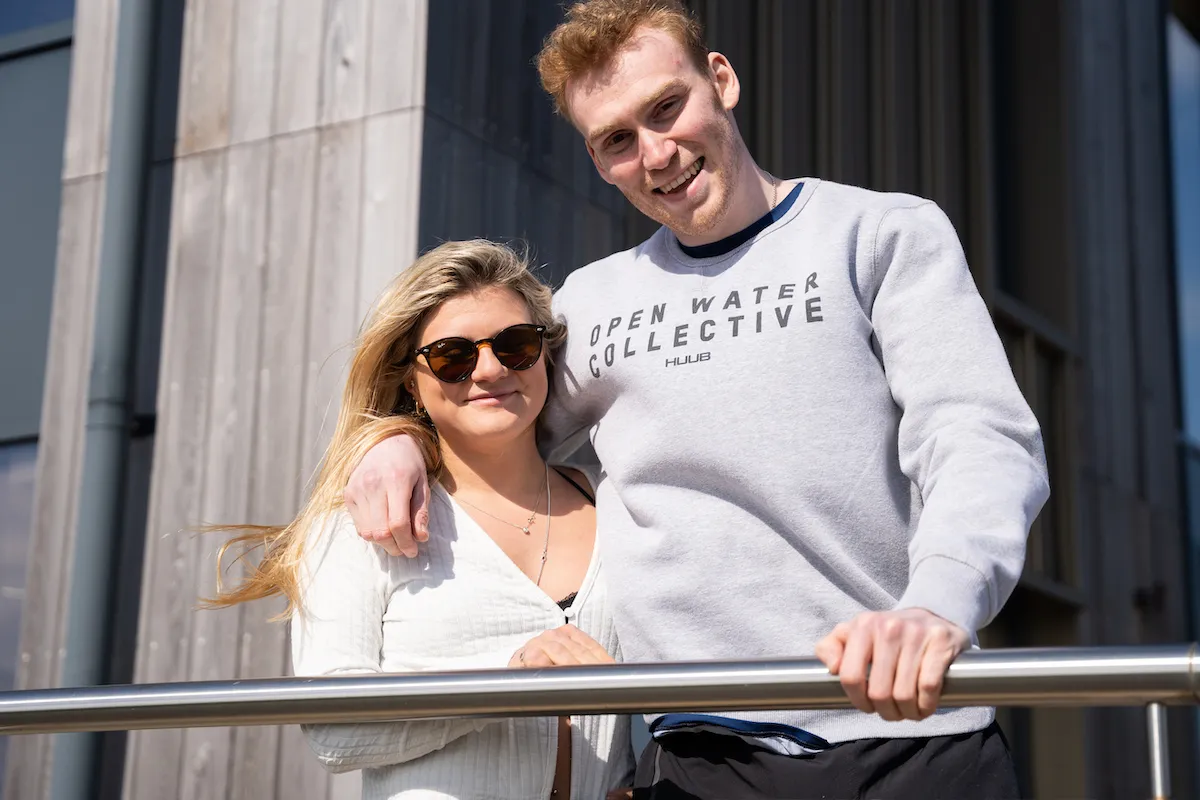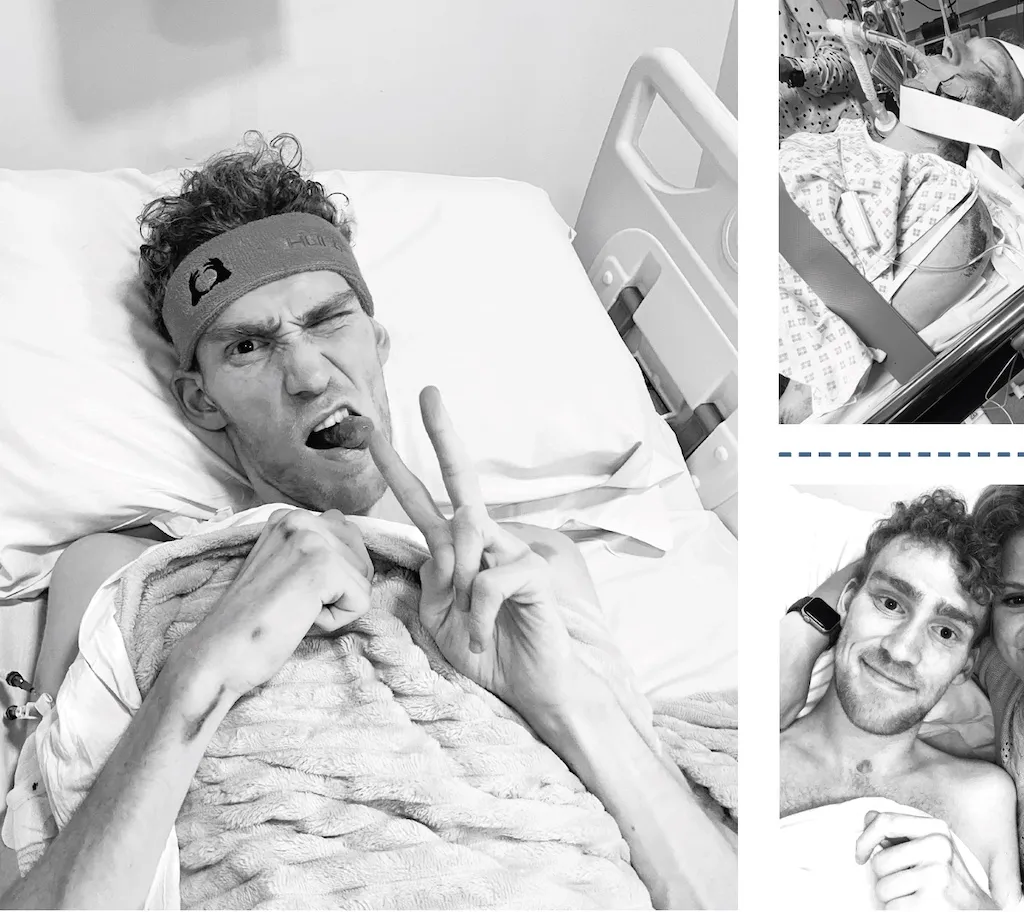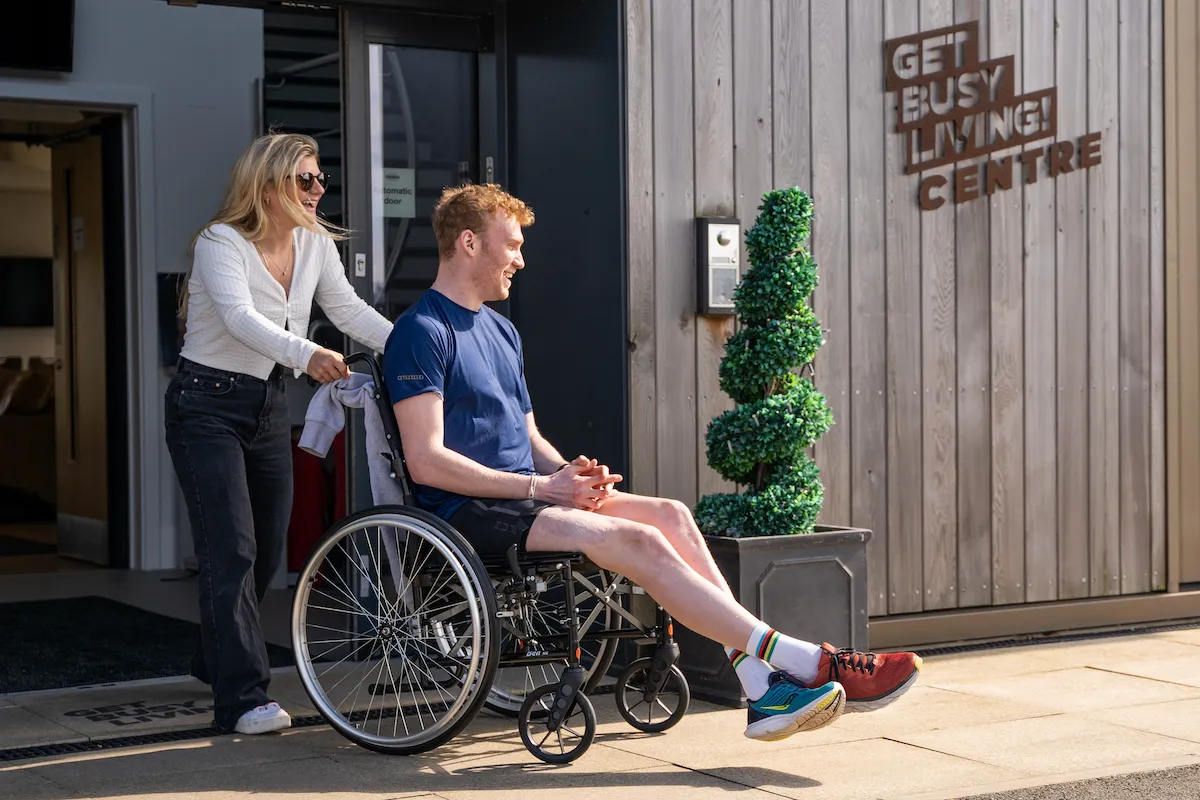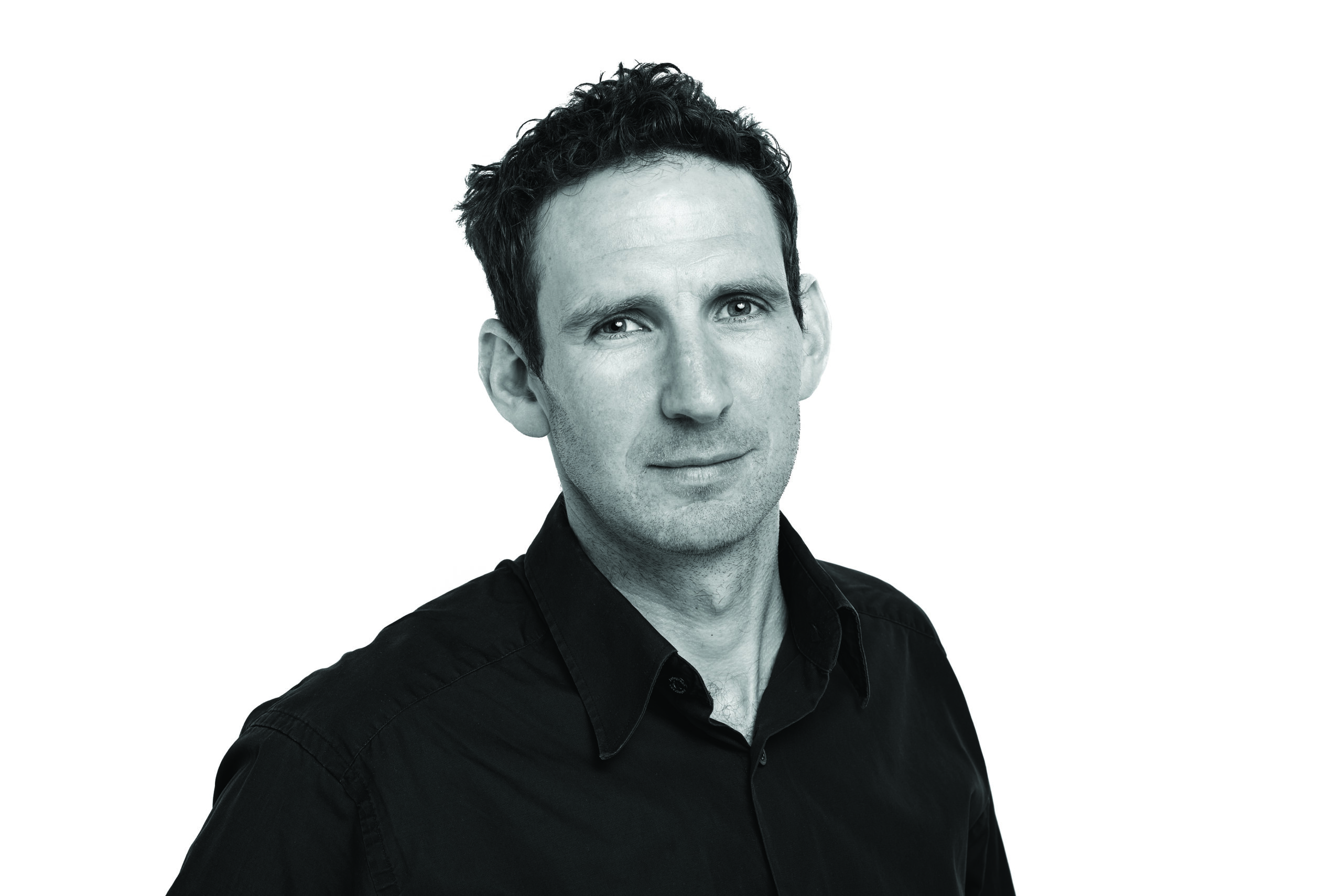On a bright, sunny day on a quiet country road near Cambridge, George Peasgood was 200 yards from his parents’ home having just completed a training session with his girlfriend, elite cyclist Frankie Hall.
It was the day before his 27th birthday and final preparations for the para-cycling track world championship in France where, once again, he’d be a medal threat.
Attempting one last sprint, his foot slipped from its cleat and he was catapulted over the handlebars. It was a split-second accident that changed his life. George doesn’t remember any of it.
It must be the brain’s self-protective way to cope with trauma, but the last George remembers before the now infamous crash on 1 October last year is chuckling along at a Jimmy Carr stand-up gig a couple of days earlier.
His parents, Teresa and David, had bought him tickets for his birthday and the show’s intermission presented an opportunity to text the host. As is a mother’s wont, Teresa couldn’t resist.
“What the f*** did you message?!” George remembers asking. “Just to give a shoutout to our son who’ll be 27 in a few days… and is a double Paralympic medallist,” a proud Teresa replied.
Carr, of course, made his stock-in-trade, un-PC quip querying George’s credentials for parasport – the truth being a lawnmower accident when George was two years old that resulted in a lower left leg that couldn’t develop fully.
Sitting in the auditorium, a strapping 6ft-plus athlete in his prime, a multiple world champion with a paratri silver and para-cycling bronze from Tokyo, it would’ve been hard to tell, but either way, George would get his own back.
More than two months later, as he slowly regained consciousness, British Triathlon asked if he’d like to receive a video message from any well-wishers. Tour de France winning cyclist Geraint Thomas and Carr were nominated, both obliged, Carr calling in person as he left a theatre performance with his son.
“Jimmy said: ‘You’ll never guess who I just saw… Peppa Pig!’” George recounts. “I replied that it sounded funnier than the last show I saw.”
It’s tales like this that bring more than a smile. Rather, a reassurance that despite suffering a traumatic brain injury, despite the occasionally compromised inflection, despite the lingering tiredness of a man who has spent months in a hospital bed in an “altered state of consciousness”
George is thankfully, wonderfully, healing. “I’m a lot better than I have been, and I’m improving,” he explains, having returned home to Leicestershire just days earlier.
All he knows about the events leading up to the accident is that he was attempting a final sprint before the end of the training session. “I’ve been told I wanted a higher peak power, but I haven’t got my file uploaded, so I don’t know – and if it’s not on Strava, did it even happen?”
The wry humour is again welcome.
At first I thought he was staying down because it hurt. But there was no noise. Nothing
Frankie Hall, pro cyclist and George's girlfriend
One last sprint

For Frankie – cyclist, girlfriend, and current live-in carer – it was far too real. She had just returned from guiding a corporate cycle ride from London to Monaco and was enjoying her off-season. As it was such a pleasant day, she joined George for the ride.
“He had 10 x 4mins off a minute’s rest,” she recalls. “As we reached the crossroads at the end of his parents’ road, we discussed that it was quite a ‘grippy’ session. He then said his peak power wasn’t that high, so he’d do one more sprint.
"I sat on his wheel and just two or three pedal turns in, his foot came out and over he went. Because I was right behind, I had to jump over him and onto the grass verge. I remember shouting, ‘That was close, George!’ At first I thought he was staying down because it hurt. But there was no noise. Nothing.”
Everything that happened next was critical to George’s survival. Frankie called the emergency services, then his parents, slid her bike into the road to alert any oncoming traffic, and refused to leave his line of vision.
“I’ve seen enough crashes to know that it wasn’t good, regardless of the fact that it’s someone that you love right there in front of you,” she says. “But as long as his eyes were open I wasn’t going anywhere. I didn’t want the last thing for him to see was me walking away.”
While an air ambulance landed in a nearby field, a quick-thinking doctor decreed the change in air pressure would pose too much of a risk and George was taken to Cambridge’s Addenbrooke’s Hospital by road.
He’d suffered a grade three diffuse axonal injury (DAI, see box below for more). “Out of grades one to three, three is the worst,” says George.
George reels off the list of his injuries: “A temporozygomatic fracture (fractured skull); contusions to the left frontal lobe, right parietal lobe and pons, part of the brainstem; a generalised cerebral oedema (fluid on the brain); a large left subgaleal haematoma; a left squamous temporal bone fracture extending to the left sphenoid bone in the head; and fractures of the cheekbone, shoulder blade, and collarbone – the latter misplaced by 18mm.
“Ninety per cent of people with my brain injury don’t regain consciousness,” he adds. “If you google DAI Grade 3, it’s some bad stuff.”
What is a diffuse axonal injury?
A severe type of traumatic brain injury causing the brain to move within the skull, resulting in shearing of axons – the nerve fibres that carry impulses. This injury is often fatal. In other cases, a person may remain in a vegetative state or have permanent disability.
The first steps

His helmet can attest. He brings up a picture on his phone showing its caved shell, and explains how thankful he is to the built-in Mips technology that’s designed to help protect the brain from rotational forces on impact.
“I think it confirms I landed on my head,” he shrugs.
George also registered a Glasgow Coma Scale (GCS) of 3. The lower the number, the deeper the coma. The scale runs from 3-15. Most people don’t wake up, and yet 44 days later he began to stir.
“The first thing I remember was Frankie walking into a room, but I had no idea where it was.”
By the end of November, George was moved from Addenbrooke’s to the neurological rehabilitation unit in Homerton, London, to continue his recovery.
He had a tracheostomy to support his breathing, and a percutaneous endoscopic gastrostomy (PEG) tube was inserted into his stomach to feed.
Much of it is blurry. George can’t remember much about Christmas other than singing a couple of songs and eating a few mouthfuls of puréed turkey with his parents, Frankie, and brother Jack and his wife, GB paratriathlete Alison, for company.
Diary entries that followed read ‘January 4th: first time since my crash, I could recall the day before’ and ‘January 13th: the day I felt I had awoken from my dream.’
Those metaphorical small steps would turn into literal ones. As he had done 25 years earlier following the accident as a toddler, it was time to learn to walk again.
By March, an Instagram video showed him walking out of hospital unaided. You can guess what the comments said.
If this had happened to anyone else, who wasn’t an athlete, I don’t think they would have survived. Less than one per cent of people walk out of the ward and I walked out. I think it comes from an elite sporting mindset… but no one knows what it actually is!
George Peasgood
Life-saving background

This year marks a decade since George started competing in international paratriathlon. Perhaps more than any other athlete he has grown up with the sport.
A bronze medal in the London world championship of 2013 signalled his talent, and he finished seventh as the youngest member of GB’s squad as paratriathlon became a Paralympic sport in Rio in 2016.
Two more categories were included for Tokyo and the opposition became stronger, but George remained the best swim-biker in the PTS5 class and the race plan never wavered: stay ahead from gun to tape.
It was a feat he almost managed in the searing heat of Japan, where Germany’s Martin Schulz just edged him for gold.
Alongside paratriathlon, George became a crack time-trialist, following up paratri silver by winning Paralympic bronze in the C4 road time-trial. It was GB’s 1,000th Paralympic and Olympic medal since National Lottery Funding was introduced.
A second world championship time-trial success came in Quebec the following summer, his final race before the accident.
“If this had happened to anyone else, who wasn’t an athlete, I don’t think they would have survived,” George says. “Less than one per cent of people walk out of the ward and I walked out. I think it comes from an elite sporting mindset, which everyone always talks about… but no one knows what it actually is!”
It’s another astute observation, and if we’re ever stumbling for a definition, perhaps George’s ongoing recovery might be the best yet.
As part of it, he also recognises that while Paralympic success wouldn’t have been possible without a high-performance support network, there are parallels to be drawn with his recovery.
The outpouring from the triathlon community has been overwhelming, including hospital visits from the close-knit Loughborough tri fraternity such as Nikki Bartlett, Claire Cashmore, Ben Dijkstra, Bex Milnes, and Olympic gold and silver medallist Alex Yee. “Alex even brought in his MBE to show me,” George recalls.
It extended to the ForGeorge hashtag, the brainchild of Huub founder Dean Jackson. With the Derby-based brand being a long-time sponsor, #FORGEORGE took the Huub display position on the tri-suits of British Triathlon elite athletes, most notably the one worn by Yee as he attempted to win the world title in Abu Dhabi in November.
Pink headbands replicating those worn by George to keep his mop of ginger hair in check were also posted to those donating to an appeal to raise funds for the Essex and Herts Air Ambulance Trust.
Always Frankie

And there, as a constant, was Frankie. Always Frankie. “God knows how she survived it all,” George says. “She’s literally an angel. I think I’ve been very stubborn, but that’s just how I survived. She’s been perfect in every sense.”
For Frankie, there was never an alternative. “We only got together around 10 months before the accident, but he’s been my best mate for eight years so I was always going to look after him,” she says.
“I can’t lie, I have bad days, but I have an amazing team around me at Loughborough Sport. We can be doing something and I will randomly burst into tears and they’re absolutely brilliant. Everyone has given me the space to do what I need to do, the academic supervisors are mega supportive and my family have been wicked as well.
“Only in the past couple of weeks – now that we know he’s safe and he’s not going to die – has it started to kick in. Before then we’d not had that security.”
Frankie is just about to start a Phd in blood flow restriction training at Loughborough University, having put her studies on hold since last summer. She combines it with cycling for the Loughborough Lightning elite team and is looking to turn fully professional in a couple of years.
“Everything has been so intense,” she adds “It became: ‘What do I need to do today?’ Simple things such as getting up in enough time to help take George to the toilet or have a shower, and getting him settled before I head to campus or training.
“If he hits his head it could be disastrous because his brain is so fragile, so we need to minimise any risks. Yesterday I had a 5hr ride and kept to local routes so I was only ever 20mins away.”
Do I think he’ll succeed? They told us he would be in a vegetative state, that he’d never walk again – twice. I think anything that boy wants to do, he’ll do. There’s no question about that
Frankie Hall
Like Center Parcs, but better

George has moved to the Matt Hampson Foundation in Melton Mowbray, the facility set up by the fundraising of the former rugby union prop who was paralysed from the neck down while training with the England U21 squad in 2005.
Here he continues his neural physiotherapy in a place he describes as “like a mini Center Parcs, but better. There’s even a leg-press machine.”
Frankie adds: “George’s attitude towards his rehab is the same as he takes to everything. He is working so unbelievably hard to get his independence back and putting his heart and soul into it. All he wants is to have some form of his old life back and he’ll do whatever it takes for that.
“Do I think he’ll succeed? They told us he would be in a vegetative state, that he’d never walk again – twice. I think anything that boy wants to do, he’ll do. There’s no question about that.”
George isn’t setting targets, at least not yet, but as each day passes and he regains a little more strength, there’s one rule he’s determined to stick to: “Just have fun with everything. I’ve used sport to do life and I thank my parents for that. As long as I have fun, I don’t mind what I am doing.”
Top image credit: Chris Day
